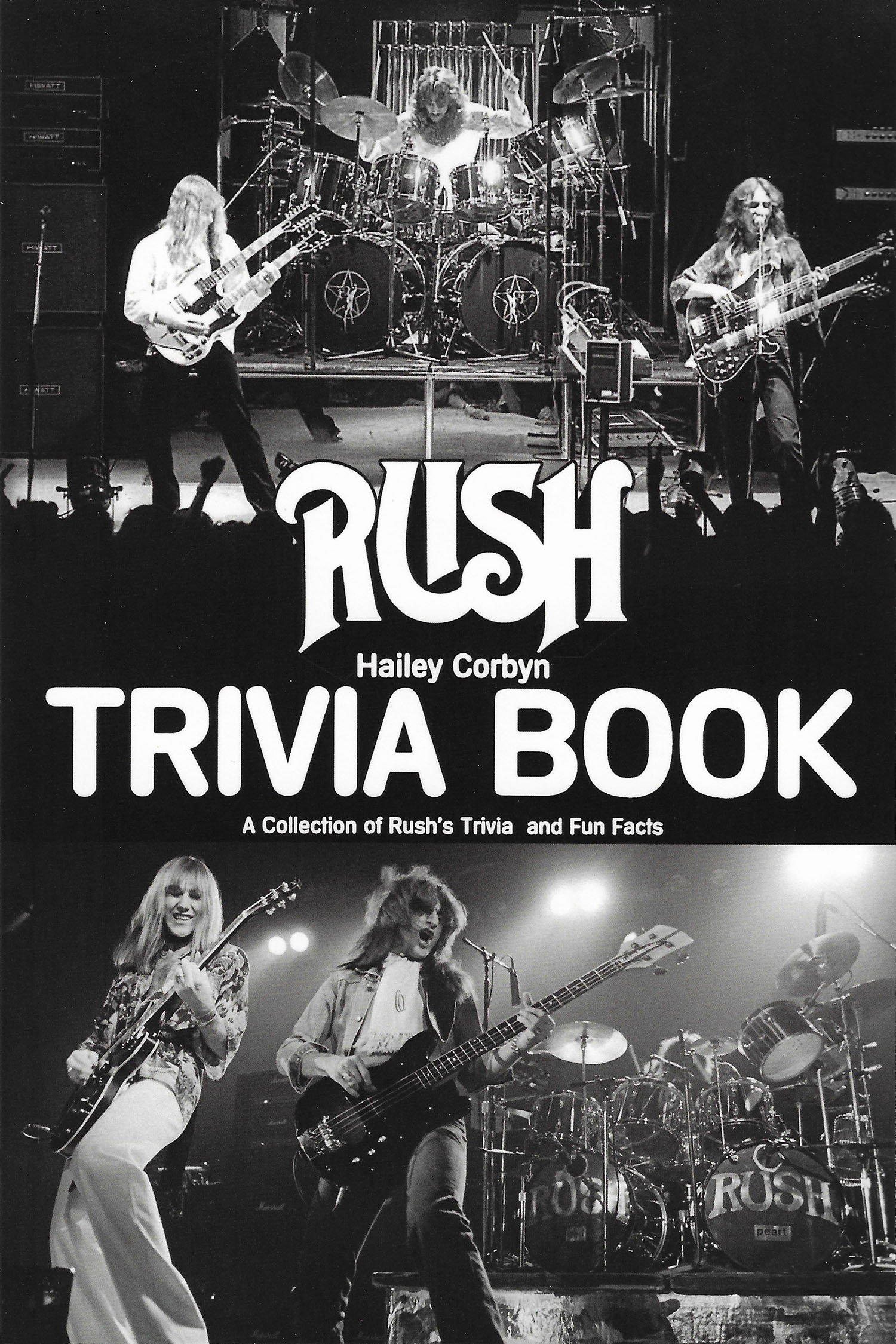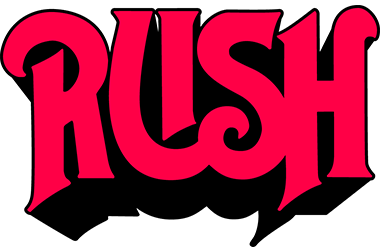
|
A Collection of Rush's Trivia and Fun Facts by Hailey Corbyn February 9th, 2022 |
ISBN: 9798514772469
Table of Contents
Introduction
I. Rush's Biography
II. Rush's Hits
2112
Limelight
Closer to the Heart
La Villa Strangiato
Xanadu
The Spirit of Radio
The Necromancer
Before and After
By-Tor and the Snow Dog
Subdivisions
Messages From Rush's Songs
III. Geddy Lee
IV. Alex Lifeson
V. Neil Peart
VI. Fun Facts
VII. Quiz Time!
Round 1
Round 2
Round 3
Round 4
Round 5
Quiz Answer Key
Canadian rock legends from Rush, whose wildly successful career have spanned more than 40 years, will be featured in our Rush Trivia Book. Devoted fans of Rush will spend a great time on Rush's songs and achievements, as well as each individual of the trio including Geddy Lee, Alex Lifeson, and Neil Peart. How well do you know Rush? Take a look at the book and involve yourself in our quiz about them and find out whether you are a die-hard Rush fan or not!
• Rush was formed in Toronto, Ontario in the autumn of 1968, initially comprising guitarist Alex Lifeson (born Alexander Zivojinovich), vocalist/bassist Geddy Lee (born Gary Lee Weinrib), and drummer John Rutsey.
• In their primary incarnation, Rush drew a heavy influence from Cream and honed their skills on the Toronto club circuit before issuing their debut single, a rendition of Buddy Holly's "Not Fade Away," in 1973.
• A self-titled LP followed in 1974, at which time Rutsey exited; he was replaced by drummer Neil Peart, who also assumed the role of the band's primary lyricist; his words gradually became a hallmark of the group's recording aesthetic.
• With Peart firmly ensconced, Rush returned in 1975 with a pair of LPs, "Fly by Night" and "Caress of Steel". The former bore the radio hit "Fly by Night" and their first metal suite in "By-Tor and the Snow Dog." The album also contained "Anthem," whose title and subject matter reflected the inspiration of dystopian novella of the same title by Russidn American writer and philosopher Ayn Rand; she would become an even greater inspiration to Peart on "2112" in 1976. "2112" proved their breakthrough release: a futuristic concept album based on the writings of Rand, it enfused the elements of the trio's sound -- Lee's high-pitched vocals, Peart's epic drumming, and Lifeson's complex guitar work -- into a unified whole. Fans loved it - "2112" was the first in a long line of gold and platinum releases. It established a modus operandi the band rarely deviated from for the duration of its career.
• A Farewell to Kings" followed in 1977 and reached the Top 40 in both the U.S. and Britain. After 1978's Hemispheres, Rush achieved even greater popularity with 1980's Permanent Waves, a record marked by the group's dramatic shift into shorter, less-sprawling compositions; the single "The Spirit of Radio" even became a mayor hit at radio. With 1981's Moving Pictures they scored with "Torn Sawyer," and "Red Barchetta." The former garnered heavy exposure on album-oriented radio and became what is probably the trio's best known song. As the '80s continued, Rush grew into a phenomenally popular live draw, as albums like 1982's Signals (which generated the smash "New World Man"), 1984's Grace Under Pressure, and 1985's Power Windows continued to sell millions of copies.
• As the decade drew to a close, the trio cut back on their touring schedule. In the studio, they were exploring more textural, synth-driven efforts exemplified by 1987's "Hold Your Fire" (that featured Aimee Mann duetting with Lee on the charting title track single).
• At the dawn of the '90s, however, Rush returned to the heavier sound of their early records and placed a renewed emphasis on Lifeson's guitar sound -- 1991's "Roll the Bones" and 1993's "Counterparts" reached the Top Three on the U.S. album charts.
• In 1994, Rush were inducted into the Canadian Music Hall of Fame.
• In 1996, the band issued Test for Echo and header for the road the following summer.
• In 1997, Peart lost his daughter to an automobie accident.
• The following year, Peart's wife succumbed to cancer and he took a three-year break from music.
• In early 2001, he rejoined his bandmates, but it would be years before Vapor Trails was released. A concert from the supporting tour was released on video as Rush in Rio.
• In 2004, Rush embarked on their 30th-anniversary tour, documented on the DVD R30, and in 2006 they returned to the studio to begin work on a new album that resulted in the 2007's acclaimed Snakes & Arrows.
• A band-associated documentary called Rush: Beyond the Lighted Stage appeared in 2010.
• Rush's 19th full-length studio concept album, 'Clockwork Angels,' arrived in June 2012. While the following year wouldn't bring a new album, it did deliver the next best thing by way of Vapor Trails: Remixed. Along with it, Rush also released C1ockwork Angels Tour, a three-disc live album recorded duriong their 2012 tour.
• The band took the next year off, and in 2013 were inducted into the Rock and Roll Hall Of Fame.
• They returned in 2014 with the R40 video box which was released to coincide with the 40th anniversary of Neil Peart's membership.
• The following year saw Rush embark on their North American R40 tour, which was purported to be their last large-scale tour. It was chronicled in the 2015 CD/DVD concert album R40 Live.
• Rush continued celebrating that anniversary for the next several years. They also undertook a reissue project that saw the release of deluxe remastered versions of catalog titles 2112, 'Caress of Steel', 'A Farewell to Kings', and 'Hemispheres'.
• Over four-plus decades, Canadian power trio Rush became one of rock's most celebrated and enduring bands. Rush garnered a large and devoted following among hard rock, heavy metal, and prog audiences almost from the beginning. They sold over 40 million records and were nominated for seven Grammys between 1981 2010; they also netted 25 gold and/or platinum albums, and all but three entered the upper half of the Top 200.
• After 1981's chart topping Moving Pictures, they began a seven-year period where their recorded sound was dominated by Lee's synth playing, which culminated in 1989's Presto.
• During the '90s, they shifted toward hooky and radio-friendly brand of hard rock, best exemplified by 1996's Test for Echo. During their final period, they delivered studio offerings that fused heavy and prog in new ways; the last was 2012's conceptual Clockwork Angels. Rush amicably split in 2015 after Peart decided to retire from touring. He died from brain cancer in early 2020.

